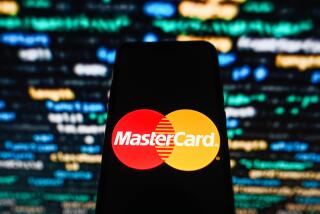Tired of pricing surprises? Why what we pay for travel goods and services changes, sometimes by the minute
It was chilly and I wanted a cup of coffee-flavored caffeine. I plopped down my $4.55 — pricey, I thought, but hey, soy milk doesn’t grow on trees — and went on my merry way. Did it again a week later, same weather, same order, same price. I wasn’t charged more because it was sweater weather. Clearly, this isn’t a business run by purveyors of travel products. Buying a ticket on a plane or bus, renting a car or a hotel room, catching a ride-share ride to the airport? Good luck figuring out how much that’s going to cost you. It’s like trying to predict … the weather. In Kansas. In spring. Or ever.
We’ve become accustomed to such wild fluctuations in airline ticket prices — thanks to deregulation — that finding a decently priced ticket has become a game for some leisure travelers, an obsession for others, and a source of angst for most because who wants to pay too much?
Airlines practice yield management, which means the price changes based on demand or competition or other variables.
It’s one term under the umbrella of “dynamic pricing.” The “dynamic” half of this equation makes it seem kind of exciting, until you realize it’s less about being “vigorous” or “forceful,” as Webster’s says in its second definition of the word, and more about “change” described in the third definition.
Whatever you call it, we’re increasingly seeing this dynamism at play in the travel field.
Example: You want to go to Vegas from May 9-12 and you want to stay at the Las Vegas Marriott. That’s a Tuesday-Friday, so you should get a good rate because you always pay more on weekends, right?
Instead, you’re seeing $303 a night for the hotel at 325 Convention Center Drive.
If you wait a week, you can get the room for $131 a night.
That’s because the National Hardware Show is May 9-11 at the Las Vegas Convention Center. It is expected to attract 30,000 attendees.
Simple supply and demand? Yes, but with a twist.
“What’s happening is not new in the world,” said George Hoffer, a transportation economist at the University of Richmond in Virginia. Whether we’re talking about yield management, dynamic pricing or surge pricing (which you hear in connection with ride-sharing services), “it’s called price discrimination, and price discrimination has been around for well over 100 years.
“It exists whenever two people are charged different prices for essentially the same good or services and the price difference cannot be justified by cost differences.”
In other words, you’re getting the same standard hotel room at the Marriott — a bed, a TV, a bathroom. The rooms are comparable and probably identical.
To be successful in price discrimination, various conditions must be present. Among them: The travel provider has to understand “intensities of demand,” Hoffer said, and it cannot allow resale.
Which is what happens with airline tickets. Prices go up at the holidays, for instance, and you cannot resell an airline ticket because it is inscribed with your name — for security reasons.
“An airline will have more than 20 different fare codes,” said James Filsinger, chief executive of Yapta, which keeps track of hotel and airline prices even after you have booked and can possibly help you get a refund. That means airlines “have 20 different levers they can pull to set airfare prices at different price points. It can be frustrating and hard to understand.”
We know that for perishable commodities — plane or train or bus tickets or hotel rooms that no longer represent a sales opportunity — it’s a way of life as companies strive to maximize their profits.
Here’s the supply-demand twist: For the growing reliance on this insanity-making way of life, you have increasingly sophisticated algorithms and computers that can store hundreds of data sets that also help manage — and maximize — revenue, Hoffer said.
That’s good for society, he added.
No way.
Yes, way, Hoffer said. For instance, Uber will employ surge pricing when demand outstrips the supply of drivers and cars.
That explains why a recent trip to LAX from downtown Los Angeles at 6:30 p.m. on a Tuesday was $27.17 and a mid-afternoon ride on a Thursday the previous month was $41.40.
This is good for society? Maybe not my particular pocketbook, but listen to Galen Guillory, who sandwiches his work for Uber between work in the entertainment industry.
“I can do it at my … leisure whenever I feel like it,” he said. “It’s not like we’re making thousands of dollars. This is a good supplemental income.”
And he supplements the supplement this way: When he’s getting ready to run an errand, he checks the driver version of the Uber app and sees whether surge pricing is in effect.
If it is, he’ll postpone his errands, take a few trips and make a little bit more money.
The driver benefits, but, Hoffer noted, the customer also benefits because availability of rides has increased.
Likewise, Owen Miller, head of revenue management for InvitedHome, a vacation rental company that operates in Santa Barbara, said “dynamic pricing has allowed InvitedHome to improve traveler access to beautiful homes by increasing the range of prices one might find throughout the year.
“That often means lower prices in off-peak periods or around the margins of the peak seasons,” he said in an email.
What’s out of reach at, say, Christmas may be affordable in the dead part of winter. The traveler gets a comparative deal, and the homeowner doesn’t let his perishable commodity die on the vine.
We’ll call these scenarios win-sorta-win for the consumer. But there must be other ways to outsmart the financial wizardry. If so, what are they?
Next week, we’ll look at how to put your travel finances in the solid win column.
Have a travel dilemma? Write to [email protected]. We regret we cannot answer every inquiry.
@latimestravel
More to Read
Sign up for The Wild
We’ll help you find the best places to hike, bike and run, as well as the perfect silent spots for meditation and yoga.
You may occasionally receive promotional content from the Los Angeles Times.







